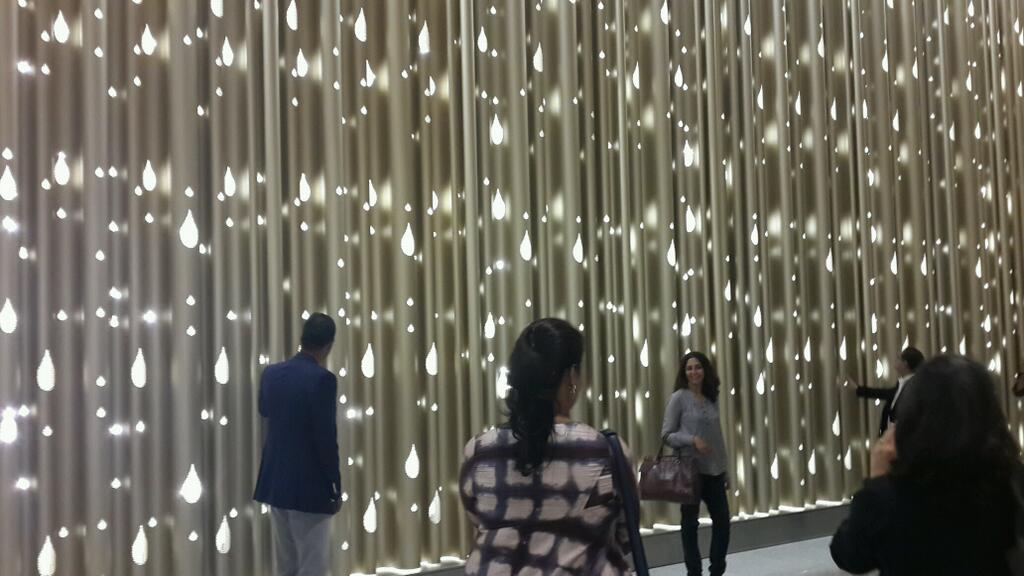Brahmos_2
FULL MEMBER

- Joined
- Feb 19, 2013
- Messages
- 1,412
- Reaction score
- 0
- Country
- Location

MUMBAI: In two weeks, India's largest museum will open its glass doors to the public. Unlike other museums, though, you would need an international air ticket to enter — this museum with nearly 7,000 artefacts, a 3km long art wall and works by over 1,500 artists is actually housed inside an airport.
Somewhere between check-in and baggage claim, Mumbai's new integrated terminal T2 will show off some of the best of Indian art and craft to foreign visitors as well as Indians.
In fact, the art programme under way at T2 is so ambitious in thought, scale and design that it is unlikely that any airport in the world in the 100-year-old history of commercial flight showcases art on this scale. Take the installation at T2's departure area — it occupies 80,000 sq ft and curves along the contours of the terminal building and displays a plethora of ancient finds (some date back to the 10th century) like delicately carved windows and doorways, totems, terracotta horses, wooden temple chariots, masks, sculptures of deities etc.
All these have been sourced in the last four years from cities, villages, collectors and museums across India.
The potential audience for this art is staggering. Once T2 opens its doors to public on January 15, the terminal building, which will be used initially only by international passengers, can claim to be the most visited museum in the world. With a capacity to handle 40 million passengers annually, T2's 'Jaye He' museum could comfortably nudge Paris' Louvre, currently the most visited art museum in the world with 9 million annual visitors, off its top slot.
The idea of marrying art and airports is not new, Europeans landed there first. Amsterdam airport exhibits the Rijksmuseum collections, France's Toulouse airport began hosting contemporary art in 2012 and Paris airport's in-house Espace Musees, which opened last year, displays works by renowned French artists. But none of these projects are as ambitious as T2.
The arrivals corridor has commissioned works by noted contemporary artists including Ghulam Mohammed Sheikh, Mithu Sen, Nek Chand, Riyas Komu, Nilima Sheikh and Desmond Lazaro, done along a wall that is 18 metres high and 1.2km long. Like the departure wall, it is viewable from all levels.
Bollywood's omnipresence in the city's collective consciousness is registered here in a mobile art work that, among other things, includes a magic box. Ordinary men go into the box only to come out as Amitabh Bachchan in his angry young man avatar.
The expert says that it was way back in 2006 that Sanjay Reddy, vice-chairman of the GVK group, which runs and operates the Mumbai airport, thought of using it as a space to showcase the country's diverse and rich heritage. To give the idea a definite shape, Reddy roped in Rajeev Sethi, one of South Asia's leading curators and scenographers.
Sethi broke more new ground, demolishing the walls between art and craft. Regional artists, be it Patua artists from Midnapore in West Bengal or potters from Malaiyur, not only share with well-known contemporary artists, but also collaborate on ideas.
Elephants with wings, fish-like helicopters, fire-breathing mythical creatures carrying passengers in their belly — all images conceived by Gond tribals in Madhya Pradesh have been brought to life as metal sculptures by Mukul Goyal, an eminent Delhi-based product designer.
In a few months' time these flying figures will be spotted in the company of metal clouds in one section of the departure installation. Up above these mythical flying figures, the fuel-guzzling A320s and Boeing 737s may continue to circle in Mumbai's congested airspace, waiting for their turn to land.
But once they do, passengers will find that Mumbai's T2 is distinctly different from the glass, steel and concrete structures that have come to define airports the world over.
Mumbai’s T2 could become world’s most visited ‘museum’ - The Times of India













